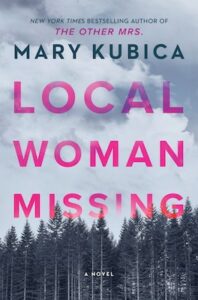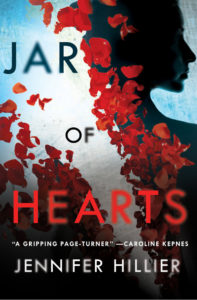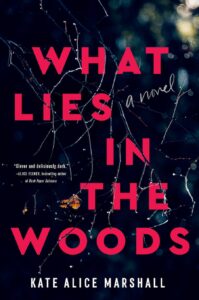When I first picked up crime thrillers as a teenager, I remember being fascinated by how many plots begin with the discovery of a dead girl. What was it exactly that I found so intriguing about these novels, considering I was often in the same age demographic as many of their victims, not to mention similar crimes in real life. Shouldn’t I have been scared, turned off, offended by what one could construe as sexism – killing women that we rarely meet on the page only to utilize them as plot devices to force the engine of a story forward?
But in retrospect, it was never the dead girl trope that I was focusing in on. It was the survivor. Two key female archetypes in the thriller, two sides to the same coin really – the dead girl and the survivor. The one who didn’t make it out and the one who still could.
These survivors were the female protagonists I found myself identifying with, turning page after page to discover how they would confront their past traumas and their literal monsters that went bump in the night. They were, and still are, what hold me at the edge of my seat during a good thriller, heart pounding, hoping that they will make it out by the end.
In my novel, You Always Come Back, I play into this same trope. There are many dead girls, with multiple twists and turns as to who their murderers may be, but it is my survivor July Weaver, the one who escaped a killer and has to return to face that past now, who sits at the heart of the story. She is the one that a teenage reader me clings onto, hoping she’ll find a way to make it out alive twice.

Dark Places, by Gillian Flynn
I don’t know if there is a thriller writer out there who has not been influenced by the power house that is Gillian Flynn. Her novel Dark Places is the epitome of the dead girl and the survivor trope.
Libby Day was the sole survivor in her brother Ben’s massacre of their mother and two young sisters. It was Libby who testified to put Ben in prison. It is also Libby, twenty-four years later, who is forced to relive those memories with the Kill Club, a true crime club dedicated to proving that Ben is innocent.
Through the team’s amateur investigating, the emotionally damaged Libby confronts the possibility that the murders may not have occurred exactly as she thought they did. Inter-spliced with flashbacks from the perspectives of Ben and other characters that were present around the time of the killings, Dark Places and the character of Libby make the reader question how lucky one actually is to be the sole survivor.

Local Woman Missing, by Mary Kubica
Local Woman Missing opens with the rapid disappearances of Shelby Tebow and Meredith Dickey, along with Meredith’s six-year-old daughter Delilah.
Eleven years later, Delilah escapes a couple that has been keeping her locked up in their cellar and is reunited with her father Josh and brother Leo. Only Delilah can barely communicate, let alone tell anyone where her mother or Shelby went.
Through a series of odd occurrences, Leo begins to suspect that the girl sleeping in his sister’s room might not be Delilah at all. So unweaves the tale of two missing presumed dead women, a survivor who may not be a survivor at all, and two families scrambling to connect all of the pieces.

Jar of Hearts, by Jennifer Hillier
Jar of Hearts in many ways takes the dead girl and the survivor trope and flips it on its head.
No one was more broken hearted when sixteen-year-old Angela Wong was murdered than her two best friends Georgina Shaw and Kaiser Brody.
Now, fourteen years later, Kaiser is a Seattle PD detective and is the one who has to investigate Angela’s murder when her body is discovered. She is one of many victims of serial killer Calvin James. The twist – Calvin was Georgina’s high school sweetheart and when caught, provides evidence that Georgina helped cover up Angela’s murder.
So begins the twisty tale of whether Georgina was another one of Calvin’s victims or the murderer herself. For those who love an unreliable narrator, full of moral ambiguity, Georgina as the survivor is one you won’t want to miss.

What Lies in the Woods, by Kate Alice Marshall
What Lies in the Woods is the story of three preteen girls, Naomi Cunningham, Olivia Barnes, and Cassidy Green, who spent one childhood summer playing fairytales in the woods. Their biggest secret: the dead girl in the cave they referred to as Persephone.
That summer ended in Naomi’s brutal stabbing as the other two girls watched. The suspected serial killer, Alan Michael Stahl, was soon after arrested. Only the girls never told the police about Persephone, and there was plenty about that night that they all left out.
Twenty-two years later, all three friends are haunted in different ways. When Olivia is discovered dead, Naomi sets out to prove it wasn’t a suicide – but there are plenty of people in that small town that would rather keep those secrets, along with the body of Persephone, buried for good.

The Quarry Girls, by Jess Lourey
The Quarry Girls is another thriller about coming of age and girlhood. In the summer of 1977, teenage girls are disappearing from Pantown, Minnesota – Elizabeth “Beth” McCain being the first. Beth is the epitome of the hopeful survivor, biding her time in captivity as she waits for her captor to inevitably kill her.
On the outside, when another teenager, Maureen Hansen, is found dead, one of her best friends, Heather Cash, longs to discover what happened to her. In a town that revolves around drugs, sex, and corruption, the most terrifying threat to Heather are the men living within it.
Maureen’s words left behind in a note are perhaps the most defining for this thriller trope: If I disappear, I’ve been murdered. Don’t let him get away with it.
It’s a call and response from dead girl to survivor – don’t let the killer win.
***
–Featured image: Persephone, Dante Gabriel Rossetti (1874)


















